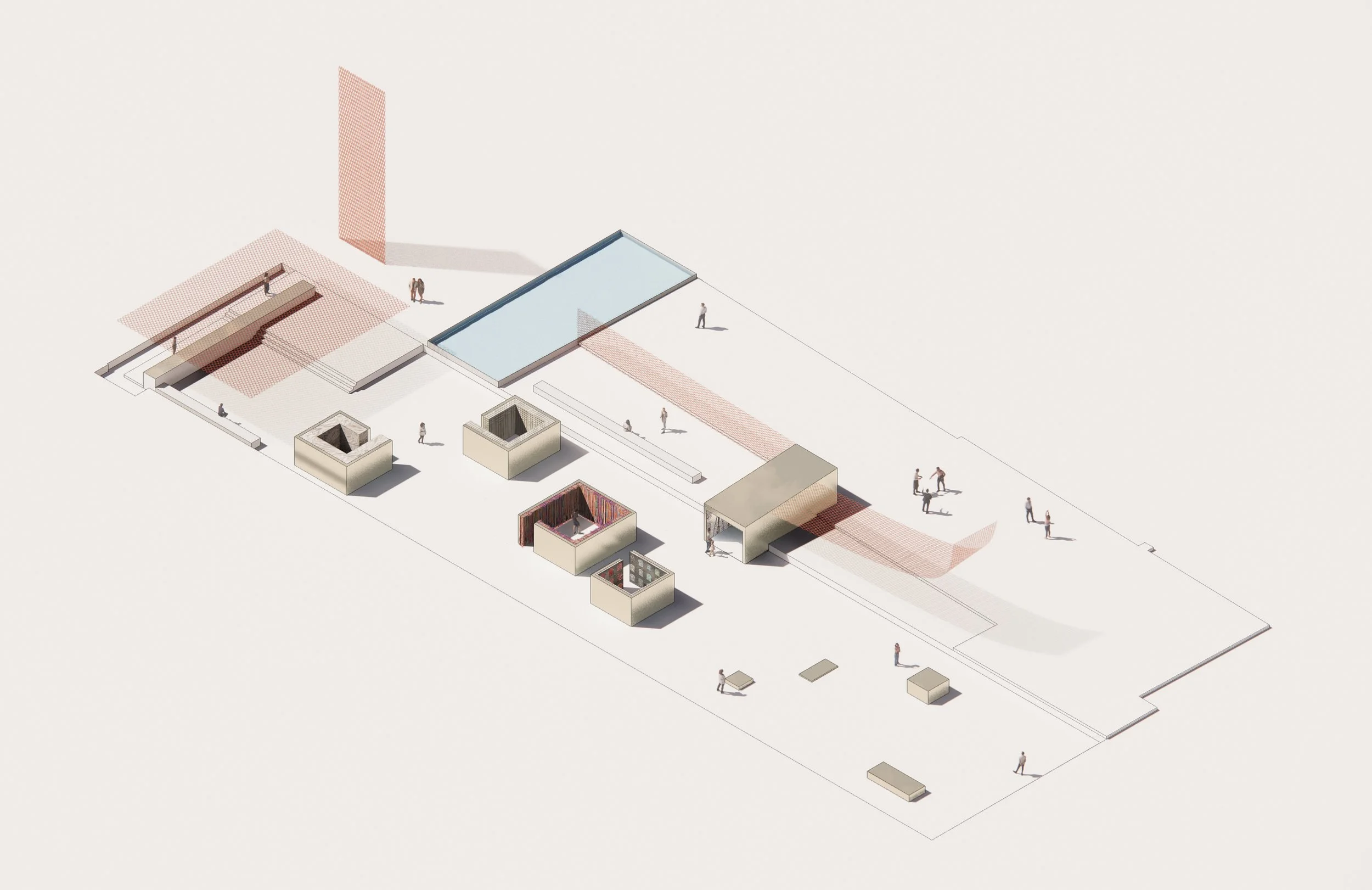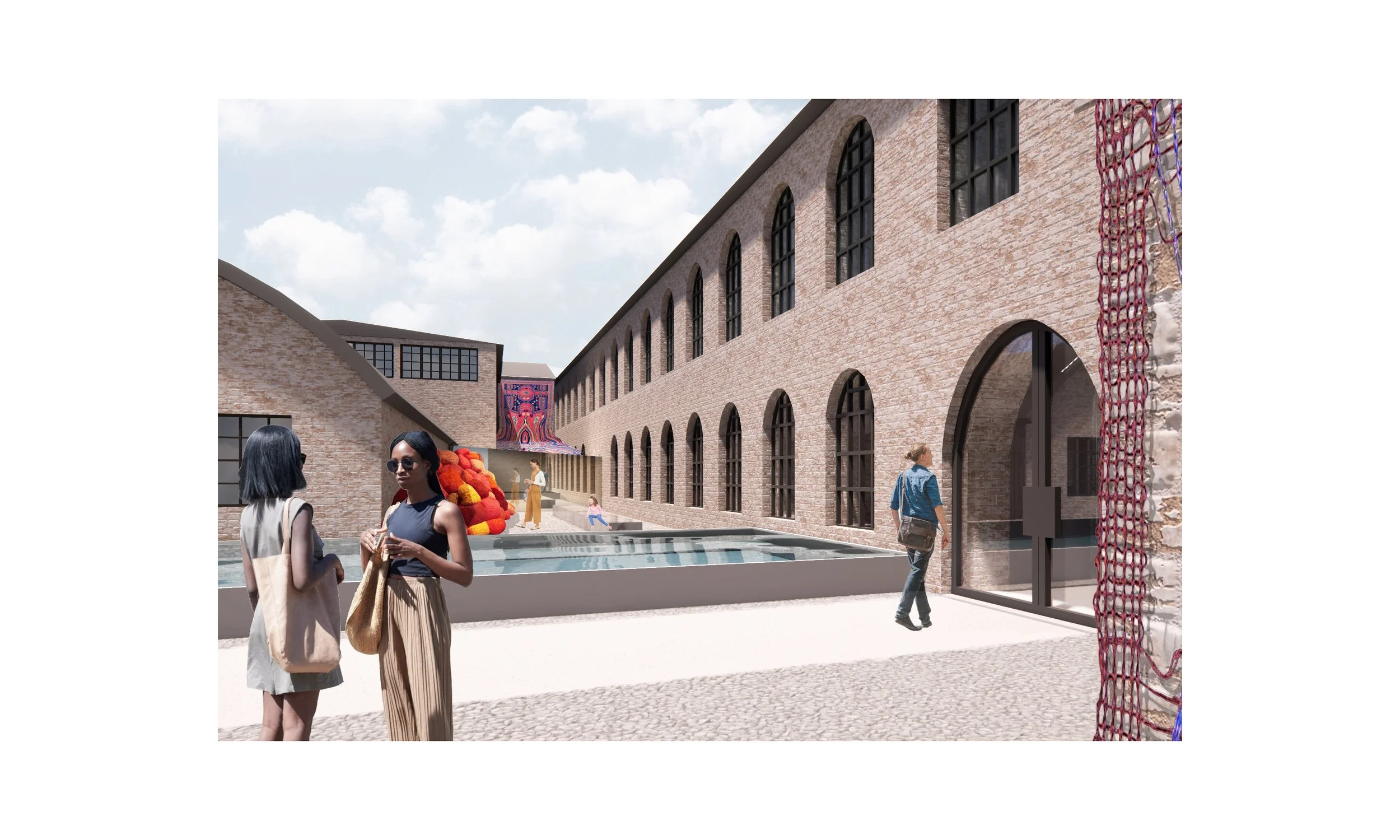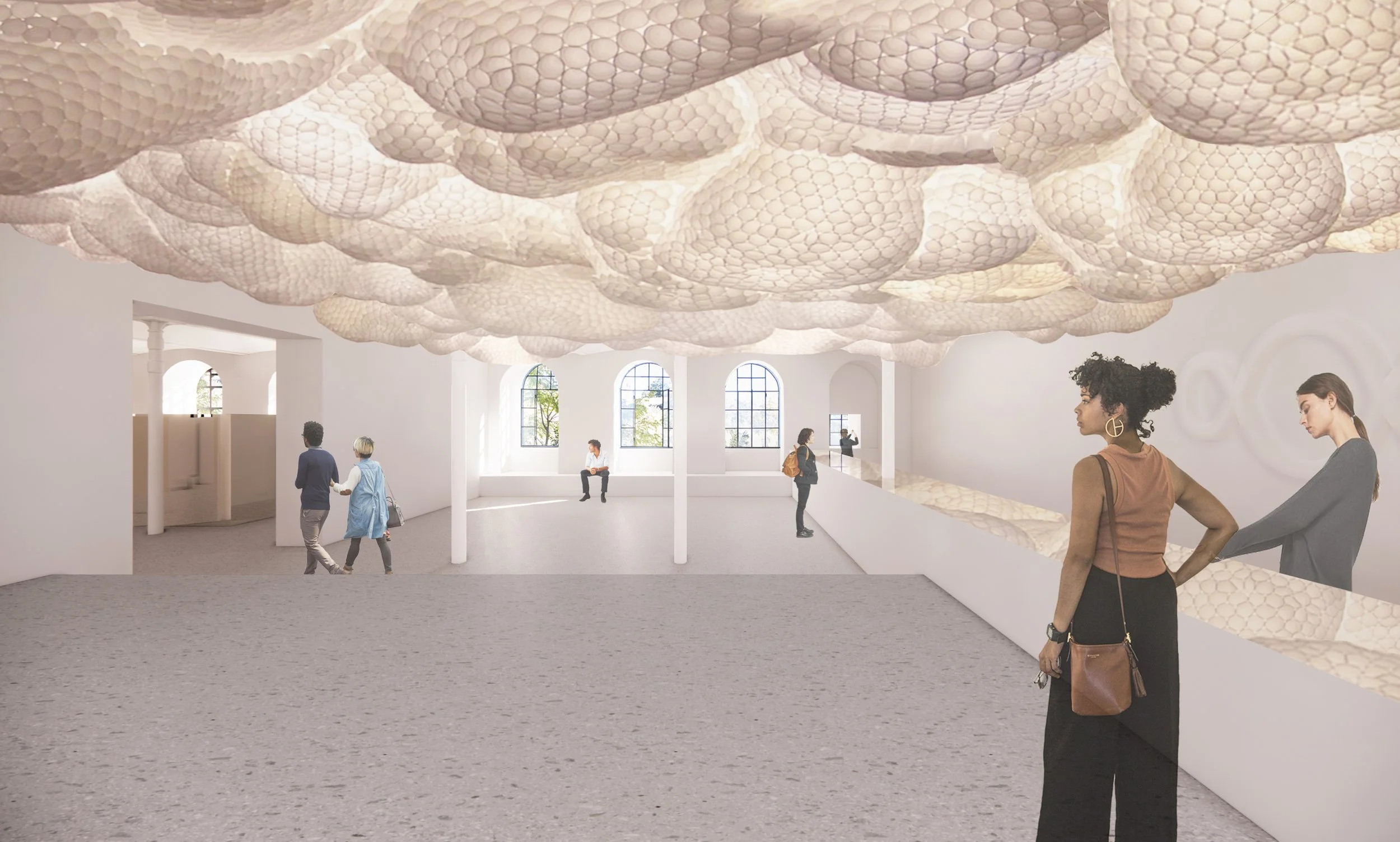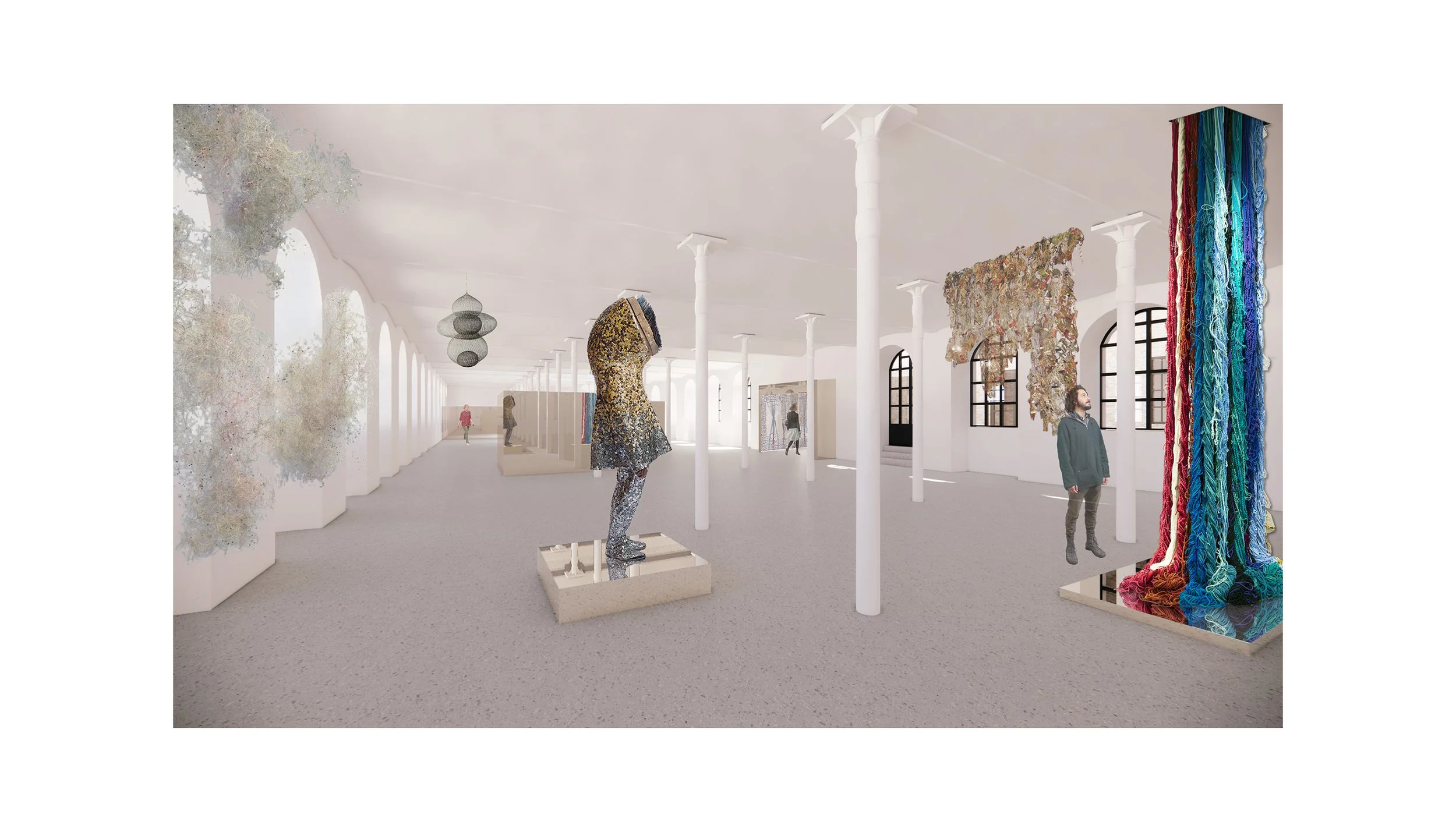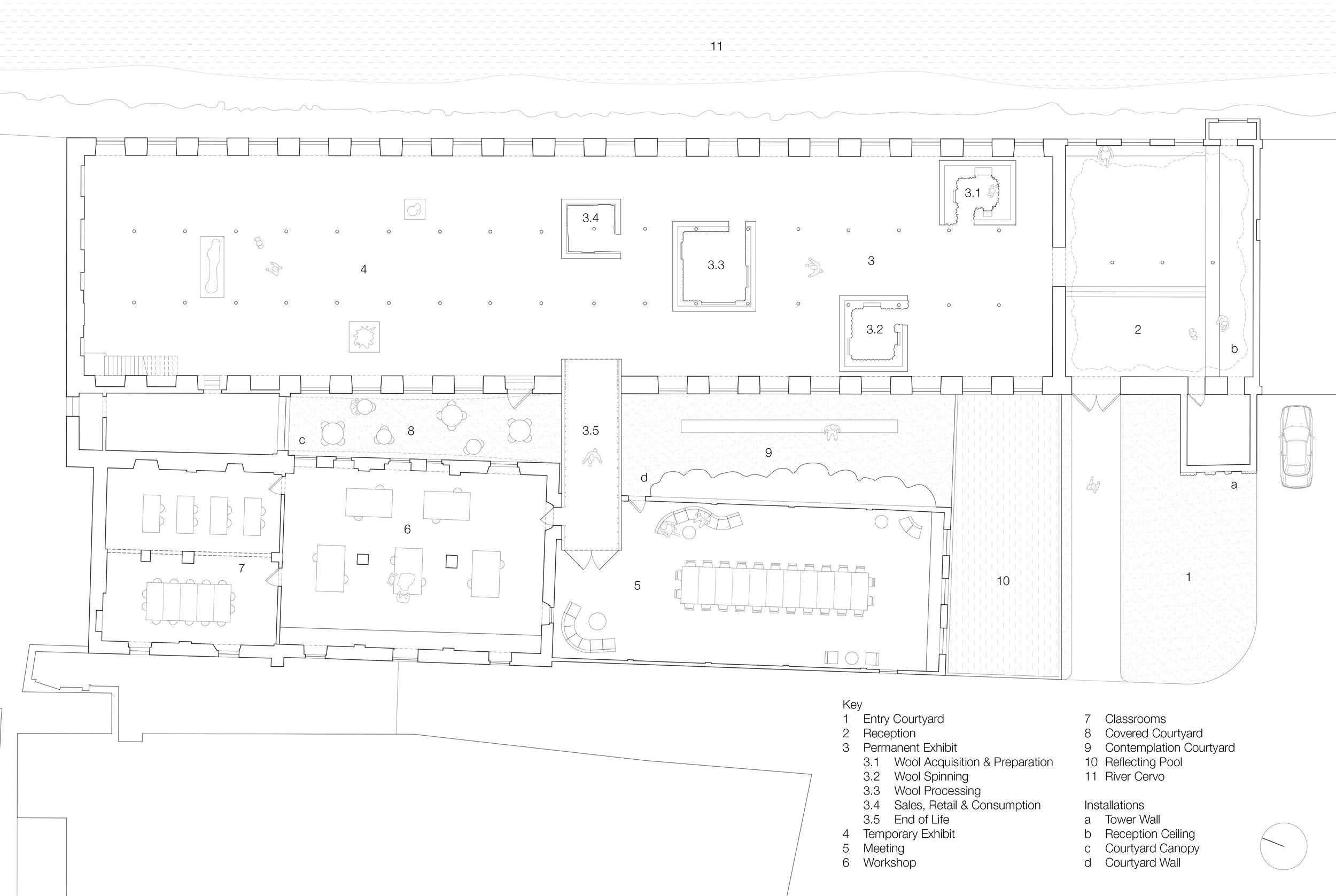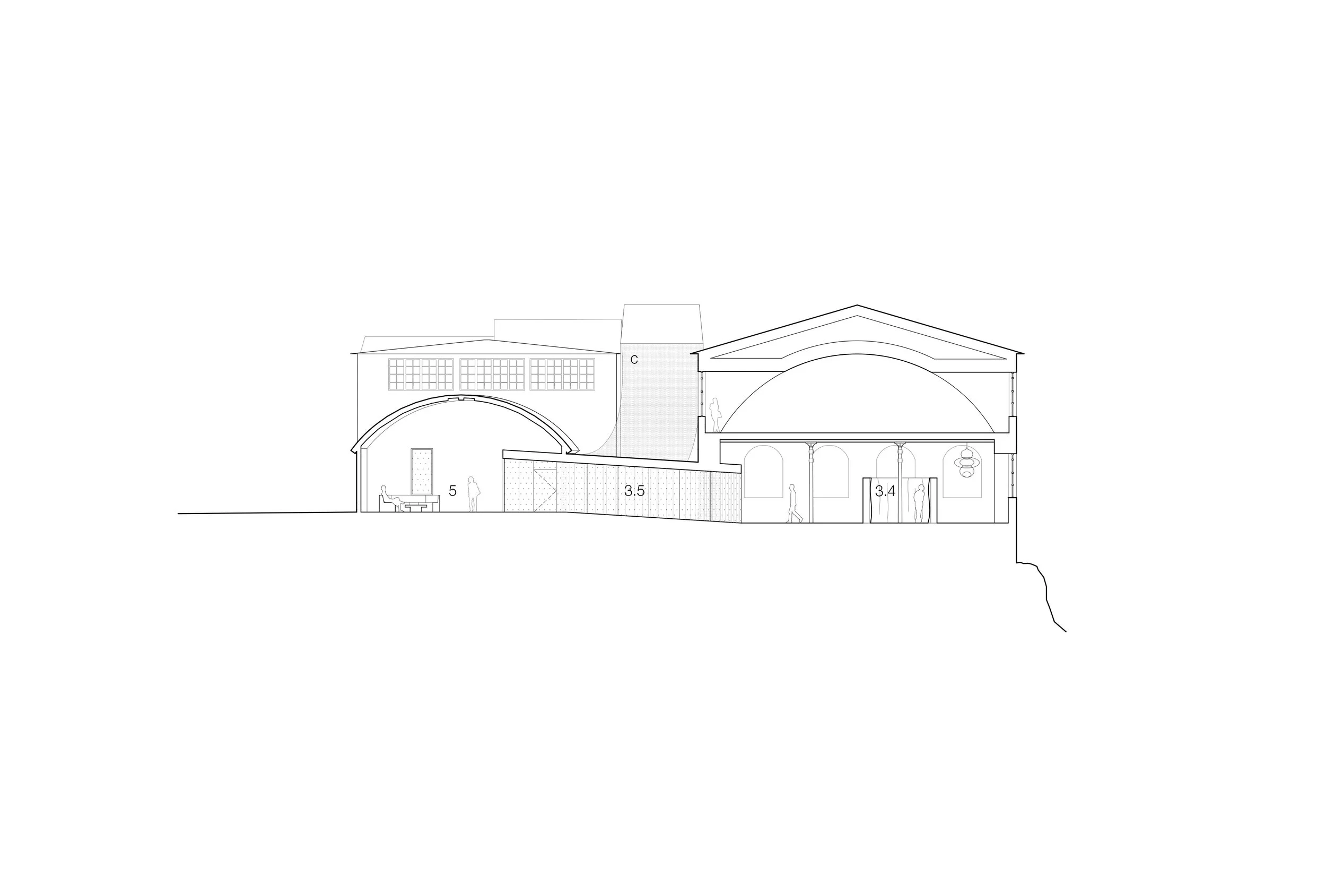Soft Reflections
Spaces for Fashion Competition
Our design for the Cittadellarte – Fondazione Pistoletto is organized around four simple principles: conservation, reflection, flexibility, and insertion. We conserve the history of the wool industry by preserving the former mill’s monumentality and ordinary beauty. We reflect the past and present with mirrored boxes full of tangible knowledge. We maximize flexibility throughout to provide infinite possibilities. We insert temporary large-scale textile installations to encourage innovation.
The permanent exhibition space is dotted with five elegant mirrored boxes woven into the column grid to encourage wandering. Each box represents a different phase of wool processing: 1) Wool Acquisition & Preparation, 2) Wool Spinning, 3) Wool Processing, 4) Sales, Retail & Consumption, and 5) End of Life.
The external mirrors are a nod to founder Michaelangelo Pistoletto’s Mirror Paintings. While observing the piece, we become the subject. The mirrors reflect us and critiques our place within the fashion industry while also reflecting the history of the Trombetta Woolen Mill and nature of the riverbank beyond.
The interiors are lined with wool corresponding to each phase of the wool making process – from fluffy raw wool, to spun wool, to dyed/woven wool, to finished textiles, to salvaged remnants ready for their next life. Physical and digital displays are tucked into the soft lining engaging all senses and providing memorable experiences. The linings showcase the behind the scenes of “Made in Italy.”
The fifth box allows us to see through a disintegrating textile lining, our reflection, and one-way mirrored glass to the courtyard and world beyond. It poses the question – “what is next?” This box acts as a bridge between the two buildings transitioning from the museum’s “past” to the workshop’s “future.” It also divides the outdoor space into two courtyards – one smaller covered break-out space and one larger contemplative space next to a reflecting pool.
Mirrored pedestals mimicking the permanent boxes trickle out into the temporary exhibition space offering flexible, movable solutions that can be used to display provocative, forward-thinking artwork.
Similarly, the meeting area and workshop maximize flexibility allowing artists and attendees to explore endless possibilities. Modular furniture can be reconfigured to meet any format and temporary walls can be deployed to create classrooms.
We have identified four areas to host temporary textile-based interventions by artists-in-residence: the entrance tower wall, reception ceiling, small courtyard canopy, and large courtyard wall. These will provide opportunities for the new generation of artists to explore alternative uses of textiles at the end of their life and promote innovation in research, technology, and sustainability. The temporality of these iconic installations will encourage visitors to return time and time again.
Our design for the cultural center celebrates the past, acknowledges the present, and looks towards the future for responsible social and environmental change.
